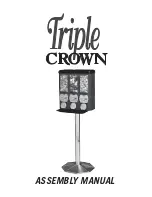
NEEDLE SIZE
9-11(65-75)
12(80)
14(90)
16(100)
18(110)
Lightweight fabrics-thin cottons, voile, serge, silk ,
muslin, Qiana, interlocks, cotton knits, tricot, jerseys,
crepes, woven polyester, shirt & blouse fabrics.
Medium weight fabrics-cotton, satin, kettleclote,
sailcloth, double knits, lightweight woollens.
Medium weight fabrics-cotton duck, woolen, heavier
knits, terrycloth, denims.
Heavyweight fabrics-canvas, woolens, outdoor tent
and quilted fabrics, denims, upholstery material
(light to medium).
Heavy woollens, overcoat fabrics, upholstery fabrics,
some leathers and vinyls.
Light-duty thread in cotton,
nylon or polyester.
Most threads sold are medium
size and suitable for these
fabrics and needle sizes. Use
polyester threads on synthetic
materials and cotton on natural
woven fabrics for best results.
Always use the same thread on
top and bottom.
Heavy duty thread, carpet
thread. (Use heavy foot
pressure-large numbers.)
FABRICS
THREAD
Starting to sew
Reverse sewing
Removing the work
At the end of seam, press down the reverse
sewing lever. Sew a few reverse stitches.
Release the lever and the machine will sew
forwards again. (A)
Turn the handwheel towards to bring the thread
take up lever to its highest position, raise the
presser foot and remove work towards the back.
Hold the threads behind the presser foot with
both hands, guide them to the slit (B) and press
down.
Cutting the thread
A
Matching needle/ fabric/ thread
Note twin needle:
1. Twin needles, can be purchased for utility and decorative work.
2. When sewing with twin needles, the stitch width dial should be set at less than "3" and set the needle
position dial to middle position.
3. European needles show sizes 65, 70, 80 etc. American and Japanese needles show size 9, 11, 12 etc.
4. Replace needle often (approximately every other garment) and / or at first thread breakage or skipped
stitches.
NEEDLE, FABRIC, THREAD SELECTION GUIDE
IMPORTANT: Match needle size to thread size and weight of farbic.
B
Silver Crest SNM 33 A1
10
















































